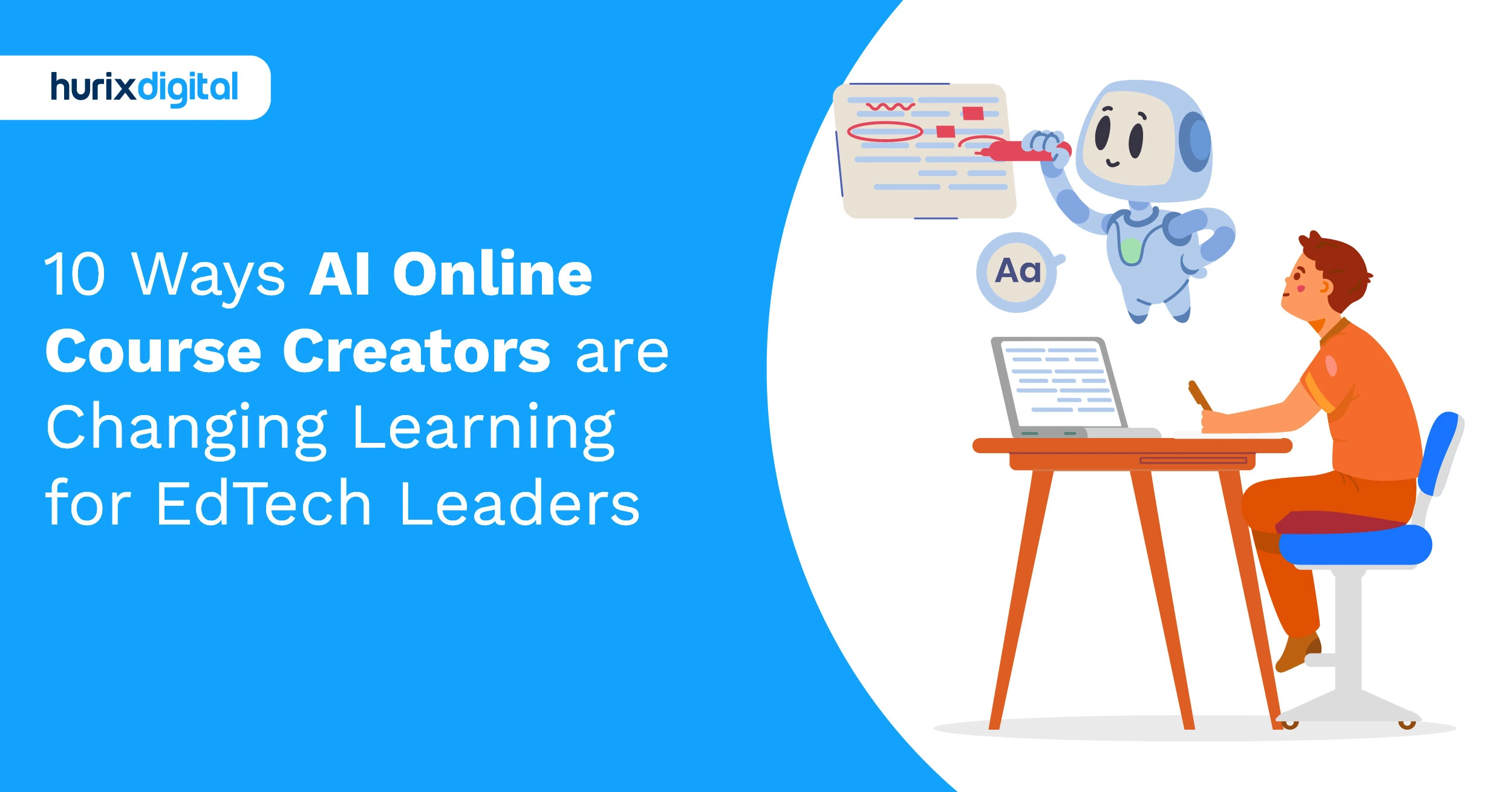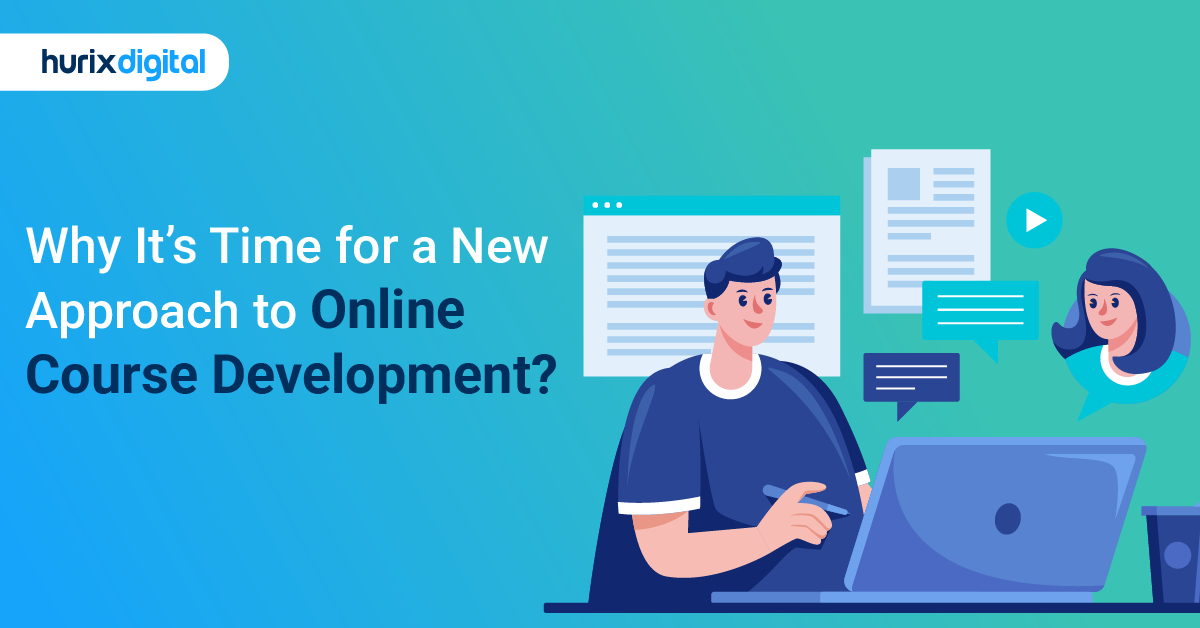
How to Create the Best Online Courses for Higher Education
Summarize with:
Gone are the days of static online courses. With advances in technologies, students today want more than just a mix of text, audio and video. What they want is engaging, immersive and interactive content. Here are 10 Advantages of e-Learning in higher education over Traditional Methods. Given the advantages that eLearning offers to students, it makes complete sense for an institution to leverage the benefits of online learning. But, with limited expertise in online course development, how do these institutions plan on creating a compelling and engaging online learning program?
In such a scenario, institutions can partner with an online course developer to create learning programs that are engaging and that appeals to the online learners. Today, a lot of online course developers are leveraging technologies such as augmented reality and virtual reality to make online learning programs more contextual, relevant, real-time and interesting.
Table of Contents:
Here in this article we discuss how to make the best online courses for higher education.
1. Break Down The Course into Small Modules:
It is highly likely that you have a high volume of course content at your disposal. The first step is to collect and validate all your content and then break it down into smaller modules.
Next, align the modules in a logical and progressive manner so they form a flowing sequence of lessons. Once your modules are ready, determine the most engaging and effective delivery method for each lesson.
2. Incorporate Interactive Elements:
To design an interactive online course, it is important to add interactive elements on all pages, or at least as much as possible. These interactive elements could be a drag-and-drop activity or a pop-up – the important thing is that the students take action when learning is in progress. This constant interaction will ensure that your students are active, attentive and immersed in the course.
3. Add Interactive Images And Videos:
Adding interactive 360° video and images is a great way for students to take control of their learning environment. These interactive videos can be used to provide virtual tours, create thematic scenes, and also enable students to interact with different characters in the scene.
Virtual reality and augmented reality can be used to take storytelling to a new level, while enabling learners to learn by doing. Then again, simulations can be used to create a simulated environment in which learners can freely practice and hone their skills.
Students can revisit these online learning environments until they have mastered the learning objectives of the online course. Interactive online courses for higher education don’t only engage learners but also encourage self-study and exploration. Here’s more on the Importance of Digital Curriculum Development in Higher Education .
4. Create Branching Scenarios:
Branching scenarios give learners greater control on the entire online course. Students can follow a particular path or change direction of the story based on the choices they make. Each decision will impact the flow of the entire online course and make it an exciting game, challenging them to explore options and come to their own conclusions.
Branching makes online courses for higher education more interesting than linear type of storytelling. Besides, branching is a great way to assess end-learners’ decision-making abilities and stimulating their critical thinking and analytical skills.
5. Add Assessments:
You can add quizzes in the form of a pop up within a section of the content or even a video. These quizzes not only serve as knowledge checks but also snap the students out of the passive learning mode. Assessment can also be in the form of true/false, multiple choice, drag-and drop, sequence or rating scale questions.
6. Microlearning:
Microlearning involves creating online courses in the form of very short and crisp videos, limited to under three minutes. Students can go through their courses any time they want. Microlearning is a great way to provide on the spot performance support and instant access to information.
Each microlearning module is created in a way that it contains all relevant information about the topic. The content can also be hyperlinked to external and internal resources, allowing students to access further knowledge on the subject.
Besides, since microlearning is short, concise and addresses a particular query or question, it can hold and retain students’ interest and attention. Online courses in the form of microlearning make learning more interactive and also place the onus on learners to remain engaged, build on their concepts and test their knowledge. Here are Microlearning Design Techniques for a Great Learning Experience.
7. Blended Learning:
Even with technology taking center-stage, it cannot replace the role of a teacher in learning. Not all students are equally comfortable with technology. Besides, they also want peer and instructor interaction in physical settings. To make the best online courses for higher education, give them the best of both the worlds, that is, online resources and the presence of an instructor, whom students can interact with in physical settings or an online environment. How to Create Content for a Blended Learning Model.
8. Add Social Media Features:
Online courses also allow you to make the best of social media. You can share your content on the intranet or internet, and take learning and discussions beyond the bounds of the classroom. Adding social platforms in the course module allows students to share content, notes and so on with their classmates and the instructor. It helps them connect online to discuss queries and get instant clarifications.
Conclusion
Now that we have discussed all the elements of making the best online courses for higher education, the question may arise is, is it really that simple? The answer is yes, technology is already at hand to enable your team to create the best of online courses. You can also create online courses using a learning management system (LMS), which you can cloud-host to allow streamlined access across geographies. Here’s How to Select the Right LMS Vendor for your Goals.
With an LMS you can create and also distribute your content. The next option is to outsource your requirements to a third-party online content developer that can custom develop your course and also provide on-going customer support. Here are 10 Tips to Select the Best Online Course Development Partner.
Related:
10 Reasons Every University Must Invest in Online Program Development
Online Learning Programs: Why Every Institution is Going Digital
Why Should You Outsource Your Content Development
Digital Solutions for Universities and Higher Education Institutions
Best Practices for Effective Online Course Development
Summarize with:

Senior Vice President
A Business Development professional with >20 years of experience with strong capability to sell new solutions and develop new markets from scratch. New Market Entry Specialist with experience working in the largest emerging markets. Exceptional experience in conceptualizing, ideating and selling new learning technologies like VR AR, etc. across multiple industry verticals.
 A Space for Thoughtful
A Space for Thoughtful 



